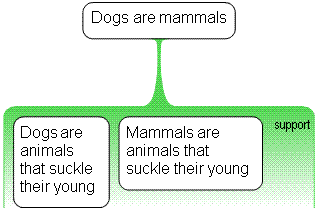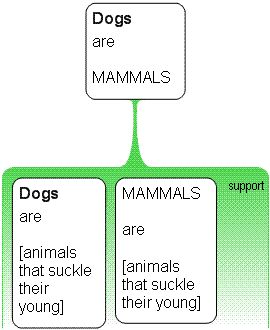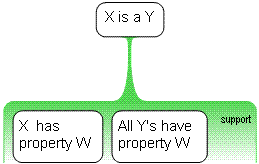The Science Of Scientific Writing Set 9 Set 9-Analysis maps • Second page • Example • Exercise 1 • Exercise 2 • Exercise 3 • Exercise 4 • Exercise 5 • Refinement Revisited • Rabbit Rule • Holding Hands Rule • Exercise 6 • Inference objections • Exercise 7 • Exercise 8 • Final.
OVERVIEW: The way to well-written science
PART I: Paragraphs and Sentences
SET A: Paragraphs: The Maps Behind Them
SET B: Paragraphs: Using Maps to Meet Readers' Expectations
SET C: Paragraphs with Something Extra: Points and Tails
SET D: The Generic Section: Expectations and Maps as Blueprints
SET E: Scientific Sections: The Methods and Results
SET F: Scientific Sections: The Discussion
SET G : Scientific Sections: The Introduction
SET H : Sentences
SET I : The Paper as a Whole
PART II: The Paper and its Sections
SET 1: Argument Parts
SET 2: Indicator Words
SET 4: Locating Arguments in Prose
SET 5: Rationale's Essay Planner
SET 6: Evidence in Arguments: Basis Boxes
Synthesis 1: Position-Early Paragraphs
Synthesis 2: Position-Final Paragraphs
Synthesis 3: Writing a Discussion I
Synthesis 4: Writing a Discussion II
Refining Claims, Revisited
In Set 3 we were introduced to the need to refine our claims, such that:
- there was no reasoning in a box
- there was only one thought per box
- each claim was a full sentence
- each claim was capable of being true or false
- there were no words that didn't contribute to the claim's argumentative force
- claims were easy to understand
- claims could make sense when read in isolation
Now that you have a feel for identifying and including assumptions, it's a good time to think more about refining claims, taking what we learnt in Set 3 a little further. These rules are major weapons against the most deadly challenge you face when trying to craft a tight argument: The Curse of the Chinese Whispers!
We will look at three important rules for argument construction:
- The Binary Rule
- The Rabbit Rule
- The Holding Hands Rule
The Binary Rule
Consider this argument:

This is a classic, generic, three part argument comprising
1. A claim
2. A supporting reason
3. An assumption.
The three component claims illustrate some generic features we should aim for in ALL the claims used in an argument. To see this first look at a slightly reformatted version:

We see that only THREE "things" (technically called 'terms' in logic) are referred to:
- Dogs
- [animals that suckle their young]
- MAMMALS
and most importantly, any one claim only refers to one PAIR of terms derived from the larger set (The Binary Rule). This is the way to formulate ALL your claims, i.e. that they are basically sentences that say:
"An X is a Y"
(e.g. Dogs are mammals; Mammals are animals that suckle their young)
or
"An X is something with property Y"
( e.g. "Dogs have fur")
We can create a "shorthand" version of our Dog argument, using these ideas, and it is now very easy to see how each claims only has TWO terms.

What happens if we don't stick to the Binary Rule? Each of the claims of the following argument contains THREE terms. Do you agree that this makes the job of pulling out the central argument a lot more difficult?

Content of this page drawn in whole or part from the Austhink Rationale Exercises with permission from Austhink.